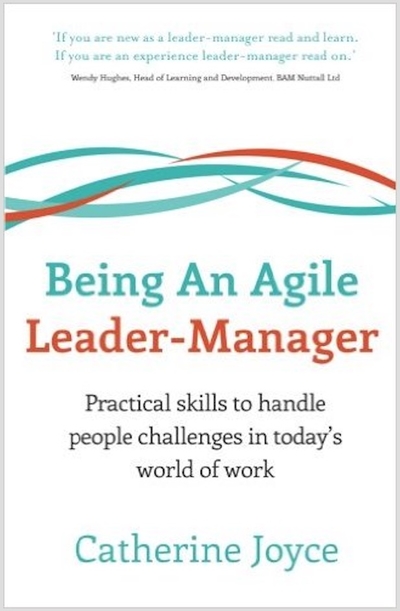
Are you a global payroll manager? A leader of an international team? Do you know the difference between being a manager and leader? Do you prefer one word over the other? In the book Being an Agile Leader-Manager by author Catherine Joyce, you don’t have to choose. Welcome to your new role as a “Leader-Manager,” or L-M.
What qualities are important for today’s L-M? The answer to that question is different today than in the past, but according to Joyce, one of the most important skills one needs to have to be a successful L-M is agility.
Joyce describes agility as the ability to lead within an organization that seems to be constantly reinventing itself via mergers, acquisitions, reorganizations, and downsizing. At the same time, you need to successfully manage an entire global payroll operation, which goes far beyond your direct reports.
Joyce goes on to define agility from the viewpoint of managing people from different generations. The challenge is real in today’s global workplace, and we need to be good at it. It can be frustrating when the generation gap is wide among employees. Today, more people over the age of 65 are in the workforce than at any other time in history. Some are managers and others are not. On my team, I manage employees who are in their 30s to 70s. That covers at least three generations!
Because I read a lot of management books, much of what is in Being an Agile Leader-Manager was information I already knew, but when I reached a section on Socratic Questions (SQ), I quickly took notice.
Also known as Socratic Dialogue, SQ is named after Greek philosopher Socrates, who had a habit of answering a question with a question, in part to help the person asking the original question to answer it himself. It is a very interesting method that allows L-Ms to clarify information, viewpoints, and perspectives and to probe assumptions, reasons, evidence, implications, and consequences.
In other chapters, Joyce discusses psychological contracts, including building relationships and expectations, and reviews strategies to be more effective, such as planning and taking action. Joyce has a way of putting a new twist on something you’ve probably worked on before.
“It is NOT about not taking action; it IS about pausing, taking a breath while you consider what else/who else needs to be considered,” she writes.
Joyce also covers resistance to change and includes one topic I haven’t read about in many other books, but one I know is relevant in the workplace today: employee engagement. In this chapter, Joyce is able to bring some powerful information to the reader about how to encourage your team to get involved.
There is so much great perspective in Being an Agile Leader-Manager. I appreciate that Joyce covers the “what,” “how,” and “why” of the issues she writes about. The self-assessments, activities, examples, lists, and chapter summaries are helpful, too. The book is very well-written and is a great educational tool.
Read this book and study it. You’ll be a more effective global L-M in no time!